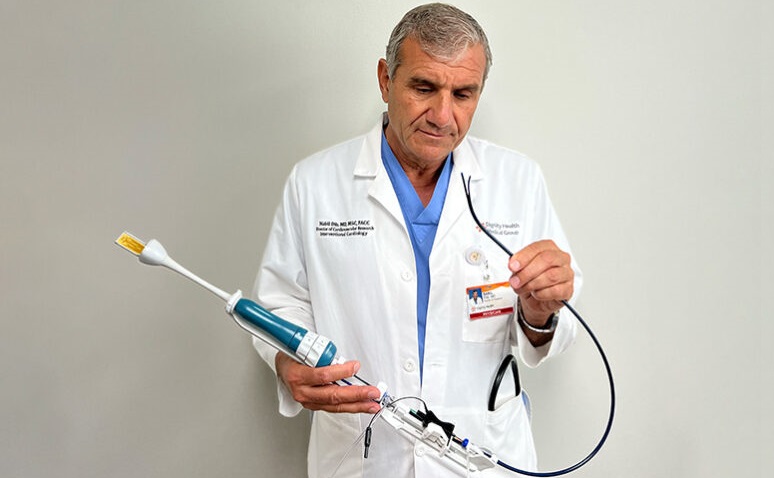Novel Catheter System Enables Safer, More Cost-Effective Transseptal Procedures
Posted on 02 Apr 2024
In 2021, cardiologists performed around 375,000 transseptal left heart procedures in the U.S., including closures, valvuloplasty, repairs, septostomies, and electrophysiology, with this number expected to rise to approximately 900,000 by 2025. One significant challenge is the corresponding rise in procedural complications. While the incidence of complications is relatively low — for instance, 1-2% of procedures using transesophageal echo (TEE) result in accidental perforations — the sheer volume of septal procedures can increase the total number of adverse events manifold. Such complications can have devastating consequences for patients, underscoring the urgent need for innovations to mitigate these risks. Now, a unique dual-lumen catheter enhances the safety and precision of transseptal procedures by offering superior visualization of the catheter, needle, and needle tip, as well as facilitating the safer transfer of intracardiac echocardiography (ICE) and other catheters/wires from the right to the left atrium of the heart.
Traditionally, transseptal procedures have relied on either inserting an ICE catheter directly into the heart or using a TEE imaging catheter in the esophagus to produce ultrasound images that guide the transseptal puncture needle and the treatment catheter throughout the procedure. The ICE catheter approach necessitates the employment of dual systems: one sheath for the transeptal needle and another for the ICE catheter, which emits an ultrasound beam from differing planes, resulting in only partial, intermittent imaging. This setup only partially and intermittently displays the catheter and needle orientation and the depth of the needle tip in relation to the cardiac structure. Similarly, the TEE approach, besides requiring general anesthesia, presents similar challenges. The UltraNav Transseptal Catheter System from Franklin Mountain Medical (Scottsdale, AZ, USA) is a unified system that aligns the catheter/needle with the ultrasound beam along the same plane, allowing cardiologists to achieve more accurate, continuous, and comprehensive visualization. This advancement not only minimizes the risk of complications but also ensures better alignment of the catheter.

By offering continuous visualization— as opposed to intermittent views— the UltraNav system significantly reduces visual interruptions caused by the cardiac and respiratory movements of the patient. Housed within the UltraNav system are the needle and ICE, simplifying atraumatic passage from the right to the left atrium and easing the transport of additional catheters/wires. Compatible with existing needles, VersaCross RF wires, and various ICE catheters, this system guarantees more precise and uninterrupted visualization during transseptal procedures, facilitating safer septum puncture. Cardiologists are provided a full view of the heart’s internal structure and the instruments in use, enhancing procedural effectiveness, minimizing complications, and improving overall success rates. Furthermore, because the UltraNav technique only necessitates moderate sedation instead of general anesthesia, patients benefit from quicker recovery times and can avoid overnight hospital stays, thereby reducing hospital costs and optimizing resource use while ensuring a safer and more positive experience for the patient.
"Although the current transeptal crossing complications are in the 2-4 percent range, they can be significant,” said Dr. Nabil Dib, inventor of the UltraNav Transseptal Catheter System. “UltraNav reduces these complications, the need for anesthesia, and the complexity of the ICE procedure. It is helping physicians treat more patients and meet the increased demand for these procedures."














